Putin’s War From Above: Inside the Record Drone and Missile Barrage on Ukraine
In recent weeks, Russia under President Vladimir Putin has sharply escalated its airstrike campaign in Ukraine-Rafael Benavente
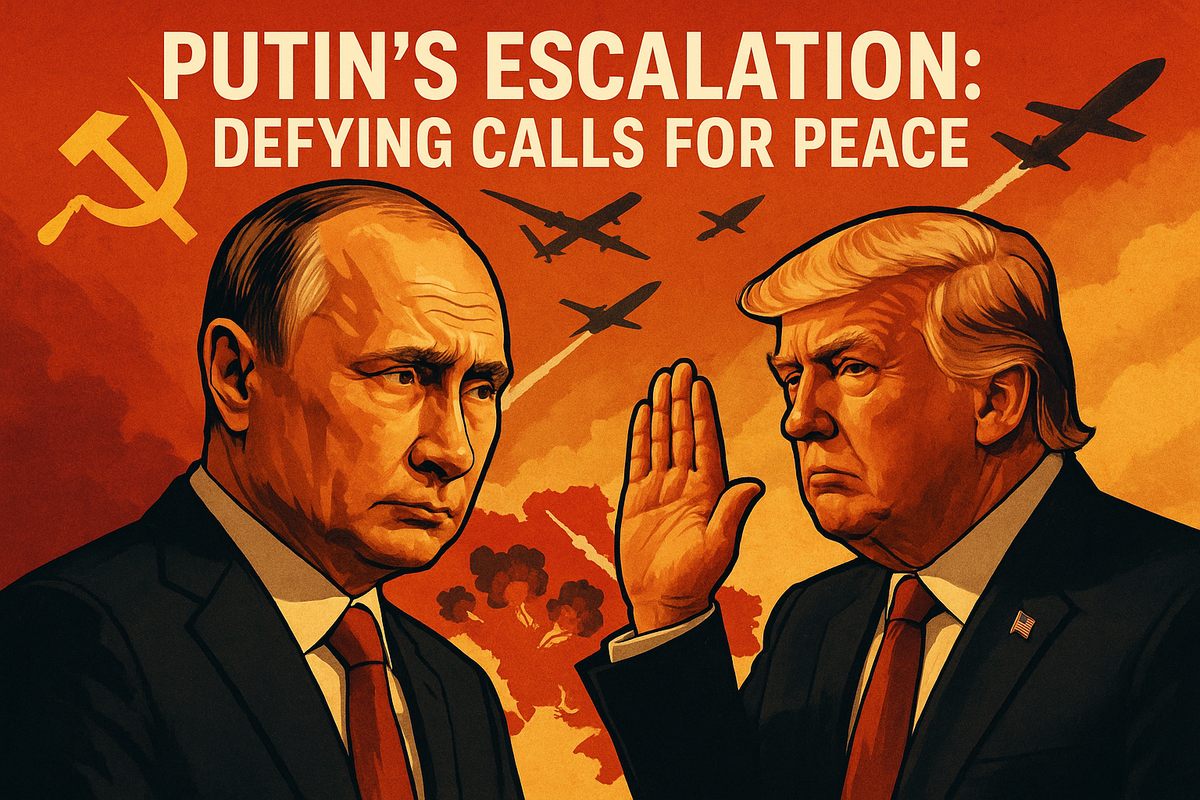
By Rafael Benavente
Putin’s Escalation: Defying Calls for Peace
In recent weeks, Russia under President Vladimir Putin has sharply escalated its airstrike campaign in Ukraine — despite renewed international calls (some coming from former U.S. President Donald Trump) for de-escalation or peace. Charts and data compiled in The Wall Street Journal reveal not just more frequent attacks, but a change in strategy: more drones, missiles, and strikes across a larger swath of Ukrainian territory. What follows is a breakdown of what’s changed, why it matters, and what risks lie ahead.
What the Data Shows
Although I don’t have the full charts here, key trends emerge from reports and summaries:
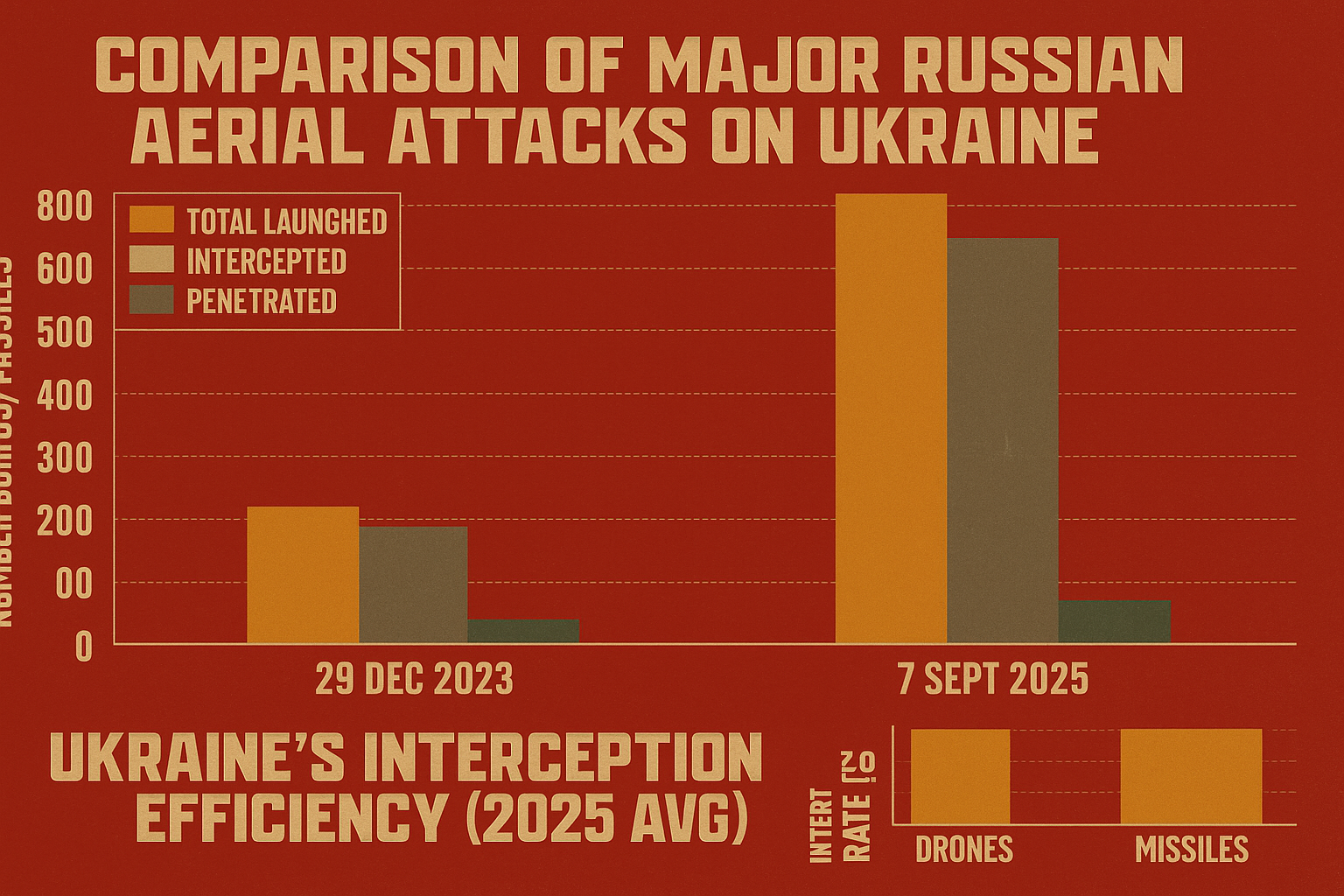
- Increased Scale of Drone and Missile Strikes
Russia has dramatically increased the number of aerial assets used — particularly drones (including one-way attack drones and decoys) and cruise or ballistic missiles. The volume now suggests a deliberate strategy of attrition: forcing Ukraine’s air defenses to consume interceptors, replacement parts, and manpower. - Wider Geographic Distribution of Strikes
Attacks are no longer limited to front-line or eastern regions. Key cities across Ukraine — including Kyiv, Odesa, Dnipro, Zaporizhzhia, and more — have seen more regular strikes. Critical infrastructure, residential zones, and government facilities are being hit with greater frequency. - Target Prioritization Shift
It appears that beyond purely military targets, Russia is increasingly aiming at infrastructure (electric, transport, power), government buildings, and civilian zones — possibly to sow disruption, weaken morale, or force political pressure. - Timing and Messaging
Some of escalation comes at politically relevant moments: after diplomatic gestures, peace proposals, or statements of willingness to negotiate. The data suggest that escalatory strikes often follow calls for peace, thereby undercutting such efforts. - Defying External Pressure and Diplomacy
Despite Trump and others calling for limits or ceasefires, the leap in both intensity and breadth of Russia’s air war seems to indicate Putin is not responding to external pressure — or is strategically amplifying operations to change the facts on the ground before any diplomatic settlement.
Why It Matters: Strategic & Political Implications
This escalation has multiple layers of consequence, both for Ukraine and for wider international dynamics.

For Ukraine
- Strain on Air Defense and Civilian Protection: As attacks increase in volume, Ukraine’s ability to defend becomes more resource-intensive. Interceptor missiles, radar systems, personnel fatigue, and logistical supply chains are all under pressure.
- Infrastructure Damage & Civil Disruption: Repeated strikes on power plants, transport, water systems, etc., degrade civilian life and can weaken both morale and the capacity for resistance.
- Political & Psychological Impact: Damage to symbolic targets — government buildings, cities far from the front — may aim to send a message of inevitability: that no place is safe. This can affect internal politics, international support, and public mood.
For Russia’s Strategy
- Testing Ukrainian Defenses: Using many drones and missiles to try to overwhelm defenses is a known tactic: stretch the opponent so that gaps emerge. If successful, it opens up options for more aggressive strikes deeper inside Ukraine.
- Negotiation Leverage: By creating damage and demonstrating resolve, Russia may be trying to force weaker terms at the negotiating table — making cost of resisting high for Ukraine and its backers.
- Domestic Messaging: Escalating force despite criticism could be aimed at domestic audiences: projecting strength, resolve, and the narrative that Russia is standing up to foreign pressure.
For U.S. and International Diplomacy
- Credibility of Diplomacy & Pressure: When peace calls are followed by major escalations, it raises questions about whether the diplomatic avenues have teeth. If external actors call for peace but are unable/unwilling to enforce consequences, their influence may erode.
- Sanctions & Military Aid: Increased escalation tends to sharpen debates over military aid, defensive systems (especially anti-air and anti-drone), and sanctions. Countries supplying support may feel greater urgency — or may become cautious if the costs mount.
- Risk of Wider Conflict: With drones and missiles sometimes approaching borders, or involving airspace issues, there’s a greater risk of spillover incidents with NATO or neighboring countries. Escalation dynamics can be dangerous.
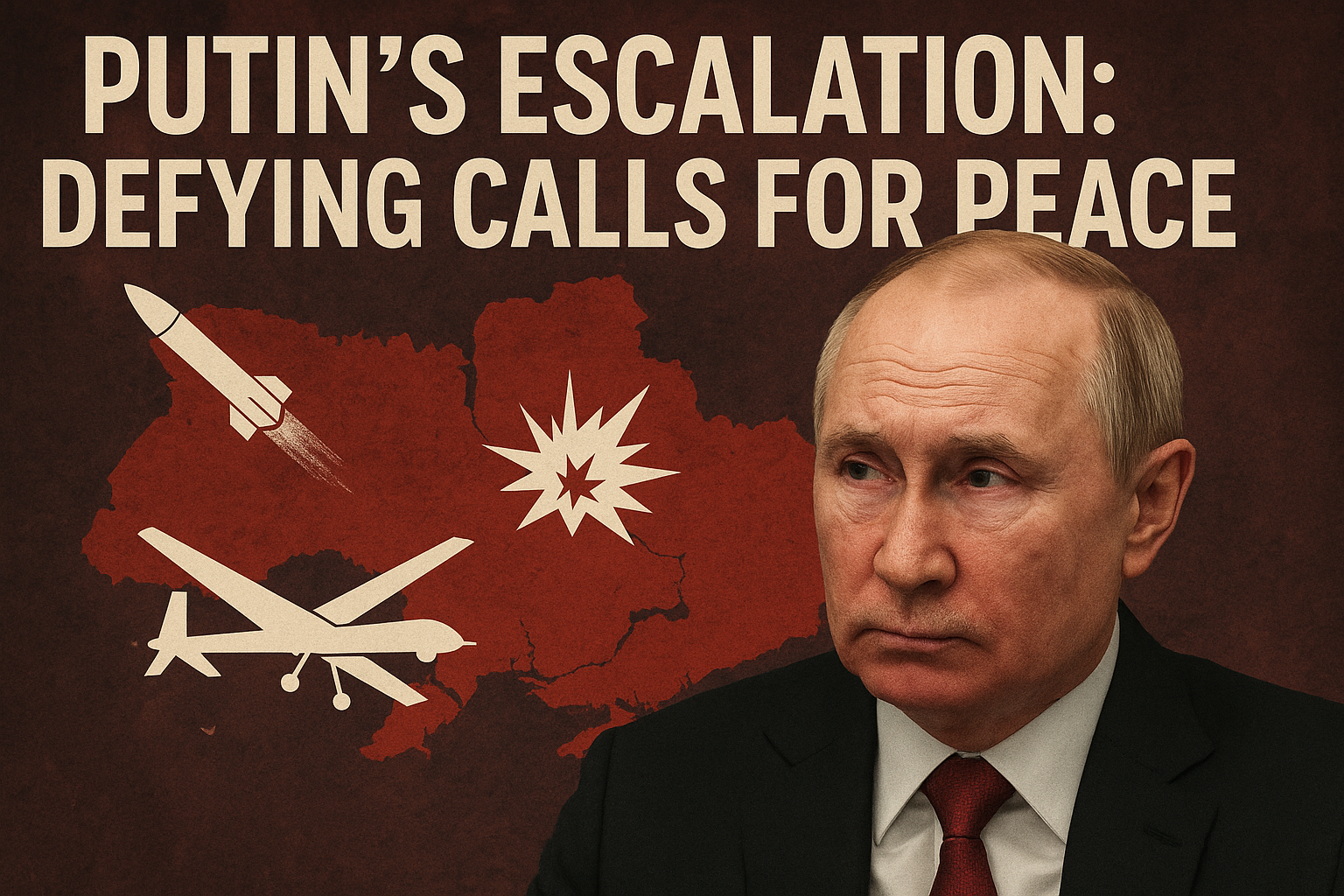
Why Defiance Now?
What might explain why Putin is choosing this moment to intensify airstrikes — even when many are calling for peace including prominent players like Trump?
- Perceived Weakness or Negotiation Opportunity: If Russia assesses that stronger claims could be made before any settlement, escalating now may offer leverage later.
- Domestic Pressures: Military success, or at least visible action, can bolster domestic legitimacy, suppress dissent, or reinforce nationalist narratives.
- Technological Trends: Russia has invested heavily in drone forces (including relatively cheap one-way attack drones). These allow high sortie rates at lower cost, making strikes more sustainable even under resource constraints.
- Strategic Momentum: Control of the skies, or at least degrading Ukraine’s ability to defend its airspace, opens up options on the ground — moving supplies, striking rear areas, etc.
Risks & Downside for Russia
Escalation isn’t risk-free. There are several countervailing dangers that Putin’s strategy could face:
- Overstretching Resources: Producing, maintaining and deploying large numbers of drones, missiles, and air defense suppression systems is expensive. Without supply lines or domestic production scaling, these may run into bottlenecks.
- International Backlash: Escalated attacks on civilians or infrastructure increase the political cost globally. This could lead to stronger sanctions, more military support for Ukraine, or increased diplomatic isolation.
- Moral/Legal Costs: Strikes harming civilians — particularly when infrastructure or non-military facilities are targeted — raise the risk of war crimes allegations, undermining Russia’s claims of legitimacy.
- Backfire Effect: Rather than coercing Ukraine into compliance, escalation might stiffen resistance, both in Ukraine and among its backers. Also, it might consolidate international resolve to aid Ukraine more decisively.
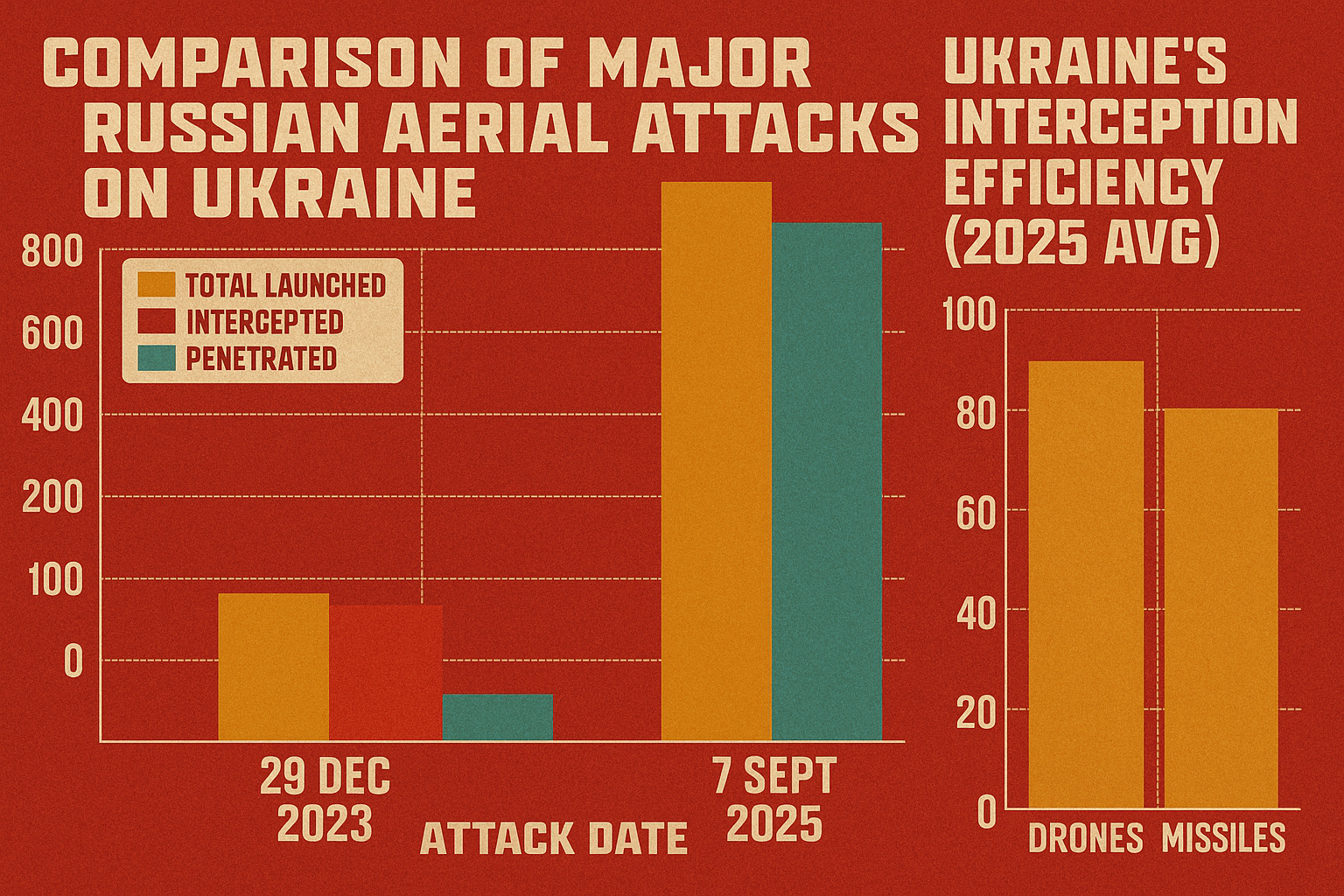
What to Watch Going Forward
To understand where this could go next, observers should track:
- Quantity & Quality of Air Assets: Number of drones launched per wave, types of missiles, breakthroughs in new drone or missile systems.
- Defensive Response & Capacity: How many interceptors are used, how often air defense fails, where gaps emerge. Also changes in supply of air defense from allies.
- Collateral & Infrastructure Damage: Extent of civilian harm, damage to electric grids, water, transport. This shapes domestic Ukrainian resilience and international sympathy.
- Diplomatic Moves & Ceasefire Proposals: Whether Russia responds to incentives (sanctions relief, negotiations) or keeps escalating regardless. Also whether other states begin to shift policies in response (e.g. deeper aid, tougher sanctions).
- Public Messaging & Media Framing: How Russia frames its strikes (retaliation, self-defense, necessity) vs Ukrainian and Western framing (aggression, war crimes, peace obstruction). This shapes domestic and global opinion.
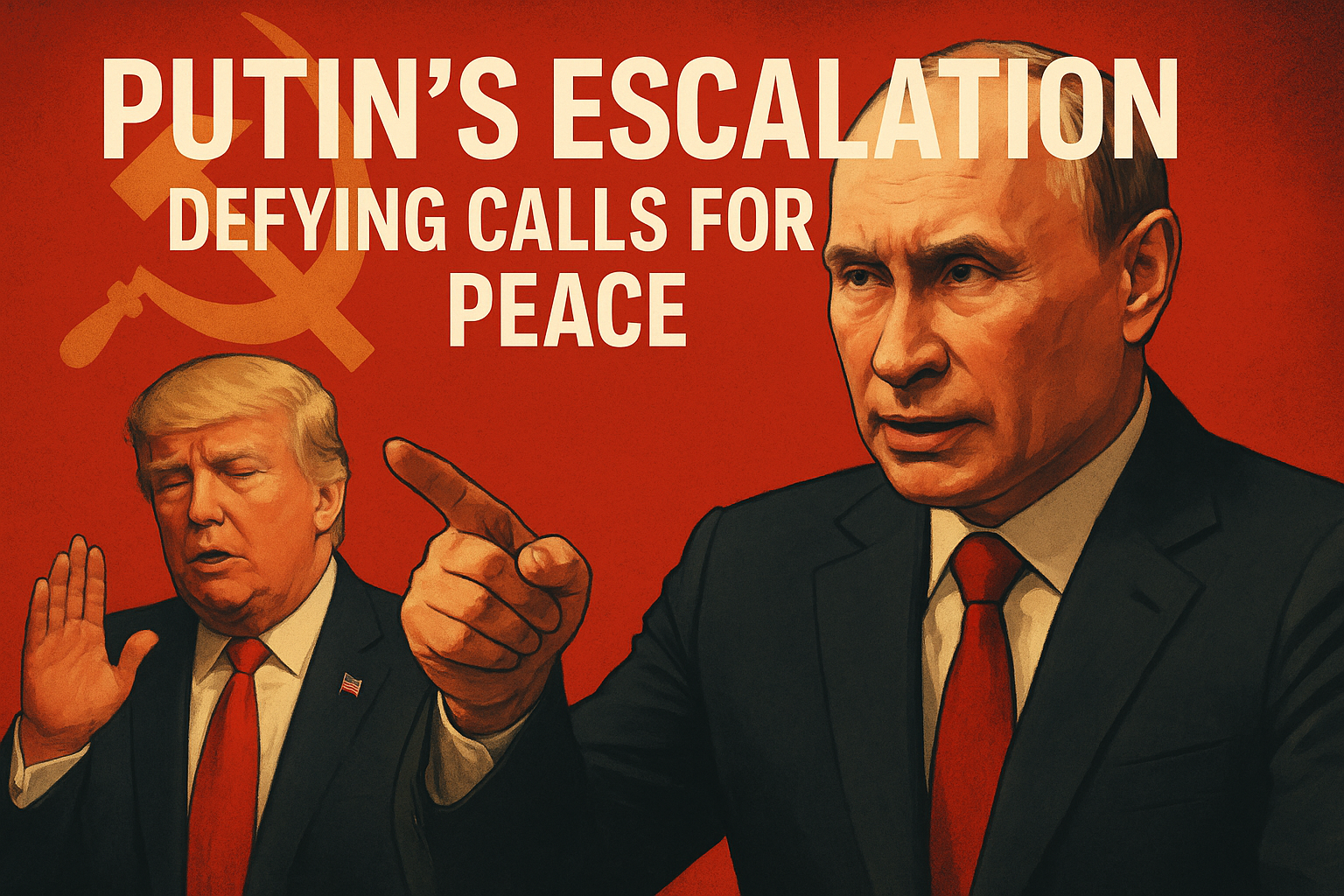
Conclusion
The latest data suggest that Putin is not merely maintaining the Russian air campaign in Ukraine — he is escalating it in deliberate ways that seem designed to defy calls for peace. Whether the goal is to pressure Ukraine into concessions, degrade its ability to defend itself, or alter the terrain of negotiation, it is clear the strategy is risky.
For Ukraine and its allies, this means mounting a dual response: strengthening air defenses, protecting civilians and infrastructure, while also maintaining diplomatic coherence. For external actors including the U.S., escalations test the effectiveness of deterrence, the credibility of promises, and the resolve to support Ukraine materially and politically.
Ultimately, escalation may bring short-term gains for Russia in terms of leverage and battlefield pressure. But if unchecked, it could provoke counteraction that undermines those gains — or impose costs (in lives, infrastructure, international standing) that are long lasting.
This analysis is based on reporting and data originally published by The Wall Street Journal in its article, “These Charts Show How Putin Is Defying Trump by Escalating Airstrikes on Ukraine.” The insights and commentary here expand on that reporting with additional context, interpretation, and visualization.
Other blogs from Rafael Benavente, Bitcoin's Tariff War
Other blogs from Rafael Benavente, US Military Cartels
Other blogs from Rafael Benavente, Law and Order - Trump Style
Other blogs from Rafael Benavente, The Spy Who Built Russia
